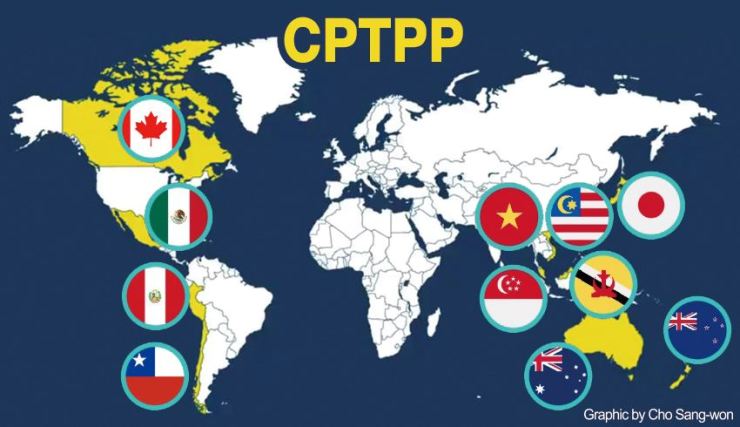2024 is forecasted to be a promising year for businesses engaged in import and export activities, with many potential markets opening up new opportunities. Economic experts predict that strengthening trade relations, coupled with economic recovery post-COVID-19, will create a strong momentum for import and export activities.
Asia: The Growth Driver
Asia is considered the most potential region for import and export in 2024. China, India, and ASEAN countries continue to be important trade partners. Among them, China, with its rapidly developing economy and large consumption demand, particularly for agricultural products, electronics, and textiles, promises to remain an attractive market.
China’s economic policies and initiatives, such as the Belt and Road Initiative (BRI), are designed to enhance trade and investment flows between China and other countries. The BRI aims to build infrastructure and trade networks connecting Asia with Europe and Africa, facilitating easier and faster movement of goods. For businesses, this means lower transportation costs and improved access to Chinese markets.
India is also emerging as a potential market with an increasing middle class and diverse consumption needs. The Indian government’s focus on ‘Make in India’ and infrastructure development initiatives is set to create a conducive environment for trade. Vietnamese businesses can take advantage of this opportunity to export products such as seafood, agricultural products, and consumer goods. Additionally, sectors like pharmaceuticals, IT services, and machinery are witnessing significant growth in India, offering more avenues for export.
ASEAN countries, including Vietnam, Thailand, Indonesia, and Malaysia, are also crucial players in the Asian market. The Regional Comprehensive Economic Partnership (RCEP), which includes these nations, is expected to boost intra-regional trade by reducing tariffs and standardizing customs procedures. Businesses can benefit from these reduced trade barriers to expand their reach within the region.
Europe: Opportunities from Trade Agreements
The EU-Vietnam Free Trade Agreement (EVFTA) continues to be a strong lever for exports to Europe. Thanks to the EVFTA, many Vietnamese goods such as agricultural products, seafood, textiles, and footwear benefit from tariff reductions and trade barrier removals. This not only helps enhance the competitiveness of Vietnamese goods but also expands the consumer market in EU countries.
The EVFTA has opened up vast opportunities for businesses to export high-quality products to the European market. However, to fully capitalize on these benefits, businesses need to focus on improving product quality and meeting the stringent standards of the European market. This includes compliance with EU regulations on food safety, environmental standards, and labor rights. Investing in quality control, sustainable practices, and certifications can help businesses meet these requirements and gain a competitive edge.
The European market also offers opportunities in niche sectors such as organic food, eco-friendly products, and high-tech goods. The increasing consumer demand for sustainable and innovative products in Europe presents a lucrative market for exporters who can align their offerings with these trends.
The Americas: Potential from the USMCA Agreement
North America, particularly the United States and Canada, continues to be a potential market for import and export businesses. The United States-Mexico-Canada Agreement (USMCA) brings new opportunities for Vietnamese businesses in exporting goods such as textiles, footwear, and agricultural products.
The USMCA has introduced new regulations that favor regional manufacturing and ensure fair labor practices. For businesses, this means adhering to rules that promote North American-made content and fair wages. Exporters can leverage these provisions to establish stronger partnerships with North American companies and expand their market presence.
Canada, with high consumption demand and open import policies, is also a potential market for Vietnamese seafood, coffee, and other agricultural products. The Comprehensive and Progressive Agreement for Trans-Pacific Partnership (CPTPP), which includes Canada and Vietnam, further facilitates trade between these countries by reducing tariffs and simplifying trade procedures.
Latin America, though often overlooked, also holds potential for export growth. Countries like Brazil, Mexico, and Chile have growing markets and increasing demand for diverse products. Exporters can explore these markets to diversify their trade portfolios and reduce dependency on traditional markets.
Africa: Emerging Market
Africa is emerging as a new market with significant potential for export. With a young population and increasing consumption demand, Africa promises to be an ideal destination for Vietnamese agricultural products, textiles, and consumer goods.
The African Continental Free Trade Area (AfCFTA), which aims to create a single market for goods and services across 54 African countries, is set to boost intra-African trade and attract foreign investments. This presents an excellent opportunity for businesses to establish a foothold in a rapidly growing market.
Participating in international trade fairs and building local partner networks will help Vietnamese businesses effectively access this market. Particularly, countries like Nigeria, Kenya, and South Africa are seen as strategic markets with great potential for trade growth.
2024 promises to bring many new opportunities for Vietnamese import and export businesses. Taking advantage of free trade agreements, expanding markets, and improving product quality will be the keys to business success. Asia, Europe, North America, and Africa are all potential markets that businesses need to focus on to develop import and export activities in the coming year.
By timely seizing opportunities and flexibly facing challenges, Vietnamese businesses will be able to expand their operations, strengthen their position in the international market, and positively contribute to the country’s economic development.

 简体中文
简体中文 English
English العربية
العربية हिन्दी
हिन्दी Español
Español